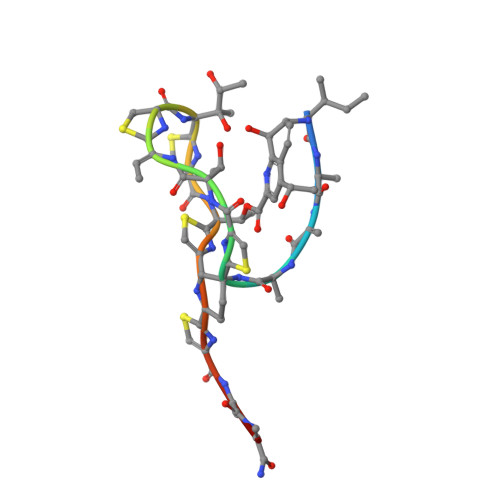The CryoEM Method MicroED as a Powerful Tool for Small Molecule Structure Determination.
Jones, C.G., Martynowycz, M.W., Hattne, J., Fulton, T.J., Stoltz, B.M., Rodriguez, J.A., Nelson, H.M., Gonen, T.(2018) ACS Cent Sci 4: 1587-1592
- PubMed: 30555912
- DOI: https://doi.org/10.1021/acscentsci.8b00760
- Primary Citation of Related Structures:
6MXF - PubMed Abstract:
In the many scientific endeavors that are driven by organic chemistry, unambiguous identification of small molecules is of paramount importance. Over the past 50 years, NMR and other powerful spectroscopic techniques have been developed to address this challenge. While almost all of these techniques rely on inference of connectivity, the unambiguous determination of a small molecule's structure requires X-ray and/or neutron diffraction studies. In practice, however, X-ray crystallography is rarely applied in routine organic chemistry due to intrinsic limitations of both the analytes and the technique. Here we report the use of the electron cryo-microscopy (cryoEM) method microcrystal electron diffraction (MicroED) to provide routine and unambiguous structural determination of small organic molecules. From simple powders, with minimal sample preparation, we could collect high-quality MicroED data from nanocrystals (∼100 nm, ∼10 -15 g) resulting in atomic resolution (<1 Å) crystal structures in minutes.
Organizational Affiliation:
Department of Chemistry and Biochemistry, Howard Hughes Medical Institute, David Geffen School of Medicine, Departments of Biological Chemistry and Physiology, and UCLA-DOE Institute, University of California, Los Angeles, California 90095, United States.




















